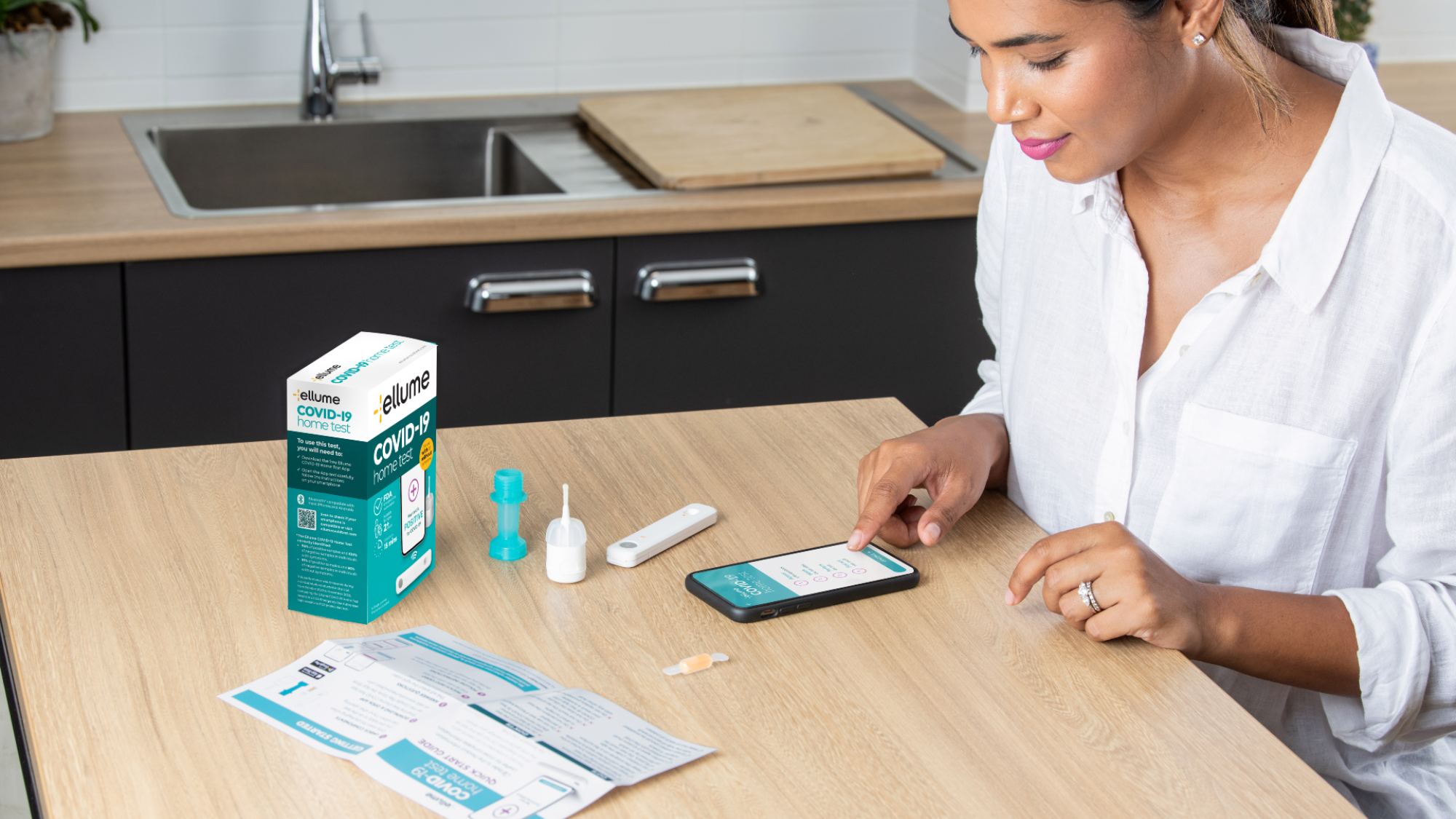
Editor's note: Ellume has voluntarily recalled its COVID-19 home tests. Some lots of the rapid at-home test were found to yield false positive results. Read more about the recall on Ellume's website.
In the early days of the pandemic, it was nearly impossible to get a Covid test. Back in spring 2020, health officials were saying that if you felt symptoms, assume you had COVID and isolate and quarantine. As time went on, testing became more available, but during the holiday season, hours-long lines formed at local testing centers in my city.
From the start, there was talk of making at-home COVID tests, but they seemed to be something we’d see in the distant future. More focus was rightly put on developing and rolling out vaccines.
- Tom’s Guide Awards 2021: Our favorite health and fitness tech of the year
- Android phones will soon store your COVID vaccination card
- Fitbits reveal major Covid-19 impact — elevated heart rate for months
While COVID isn’t completely over yet — the more-contagious Delta variant is still causing case spikes in several states — the return to “normal” activities is speeding up; I myself just flew on a plane for the first time since the pandemic started. So, having easy access to Covid tests is just as crucial as ever. And now, you no longer have to go to a pharmacy or doctor’s office to get tested.
The $40 Ellume home COVID test (available for purchase on Amazon and CVS online and stores) is the first over-the-counter, at-home rapid antigen test that received emergency authorization from FDA. It connects via Bluetooth to an app that analyzes a nasal swab and processes the results. And while the packaging doesn’t trumpet its accuracy, Ellume CEO and founder Dr. Sean Parsons told Tom’s Guide that the tests deliver 96% accuracy in 15 minutes.
The morning after I returned home from my trip, I used the Ellume test. Here’s how it went.
What comes in the kit and how it works
When I opened the Ellume box I found four components: the analyzer, a nasal swab with a child adapter, a dropper and a vial of processing fluid. All items were packaged and sealed separately and are designed for single use. The box also included an information packet and a quick guide.
Sign up to get the BEST of Tom's Guide direct to your inbox.
Get instant access to breaking news, the hottest reviews, great deals and helpful tips.
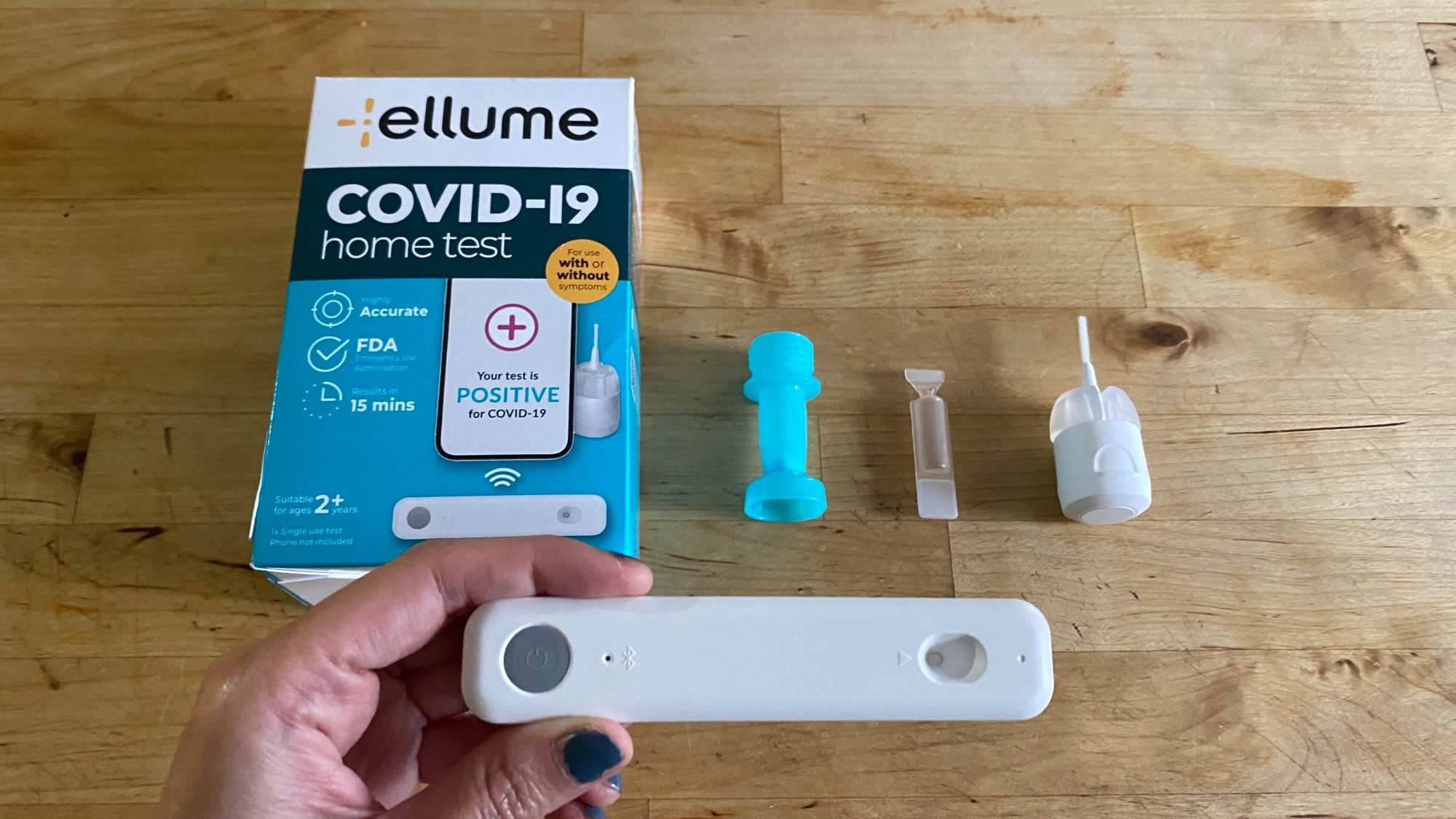
To use the test, I first downloaded the Ellume app on my iPhone (it’s available in both Apple and Google Play stores). Before taking the test, the app prompted me to answer basic information, most of which was voluntary aside from my date of birth and state/ZIP code. Then, the app played a brief video explaining the process. Only once the video finished was I able to start the actual test.
The app took me through each step. The first was to connect the analyzer via Bluetooth to my iPhone. Next, I emptied the vial of processing fluid into the dropper. Then, I applied the swab in my nose (both nostrils) and screwed it tightly onto the dropper. I flipped open the dropper cap and squeezed five drops of fluid into a small hole in the analyzer.
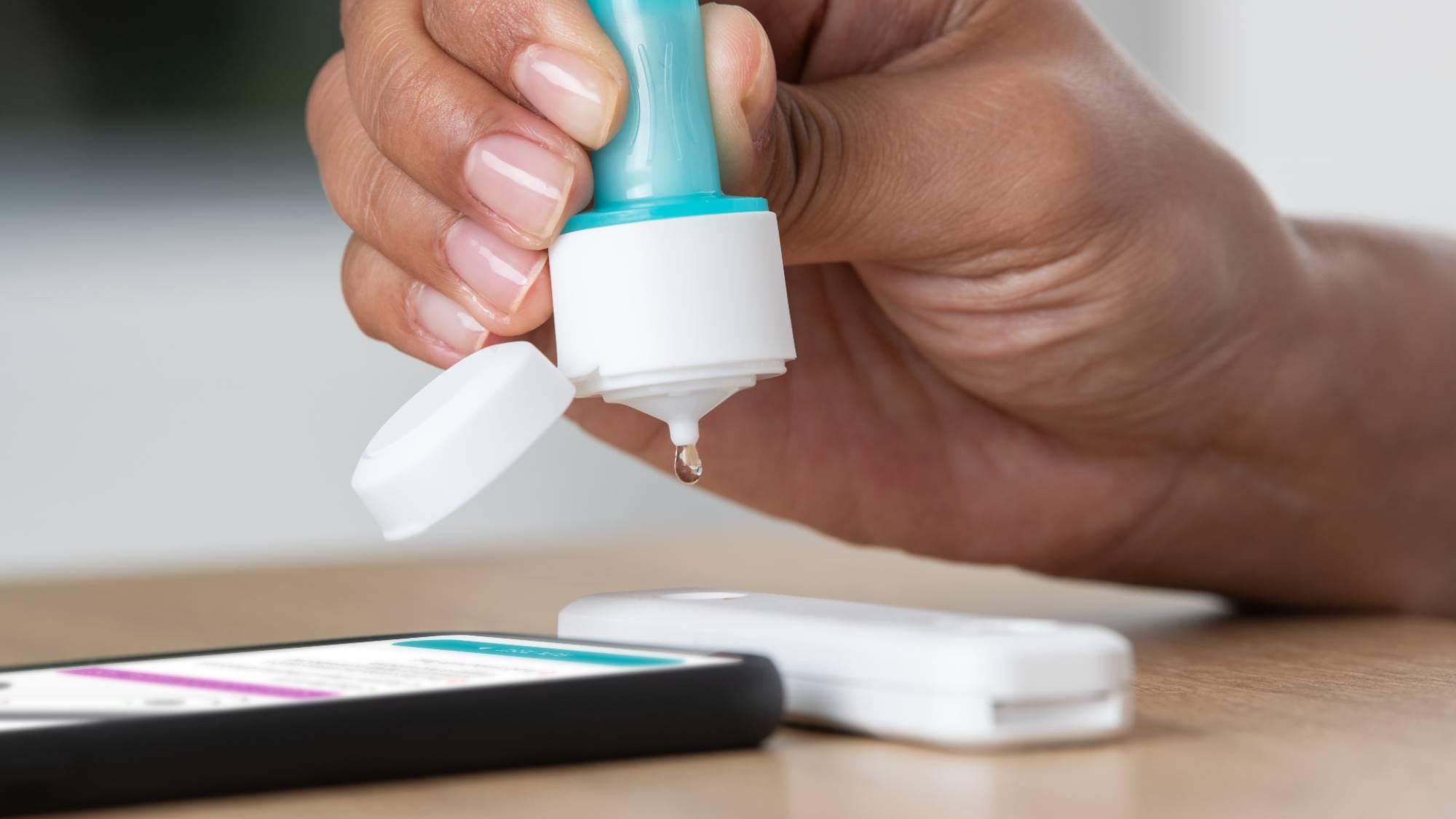
After that, the app started processing and counting down 15 minutes until the results came back. The app displayed that my test was negative.
The entire testing process was a breeze — aside from the discomfort of swabbing my nose. But the instructions were crystal clear, the app worked seamlessly and I felt confident in the results. And since each kit retails for under $40 (now available on Amazon), I wouldn’t have to break the bank to test myself, even for a few days in a row.
The story behind Ellume’s test
Parsons explained that the seeds for Ellume’s home COVID test were planted well over a decade ago, during a swine flu breakout in 2009. The company saw a need for rapid tests that didn’t need to go through a lab. Then, technology took a giant leap forward with smartphones and Ellume worked to integrate their diagnostic tech with smart devices. The result was a patented detection method that uses unique fluorescent nanoparticles and a sophisticated reader system.
Still, Parsons and his team didn’t want to just “bolt on an app that takes a photo of the test strip or something. What we did was go further than that. We created our instruments so it was fully integrated,” he said. “And the place that we got to was with a Bluetooth-connected, fully digital analyzer.”
While the analyzer looks unassuming, “There's an awful lot of electronics that went into making it simple … There’s a whole bunch of firmware that is on the disposable cartridge.”
But the most important aspect of the home test was making it extremely easy for anyone to use. That meant coming up with the right kind of instructions to minimize human error. Other rapid tests rely heavily on consumers using them properly, which can result in false negative results.
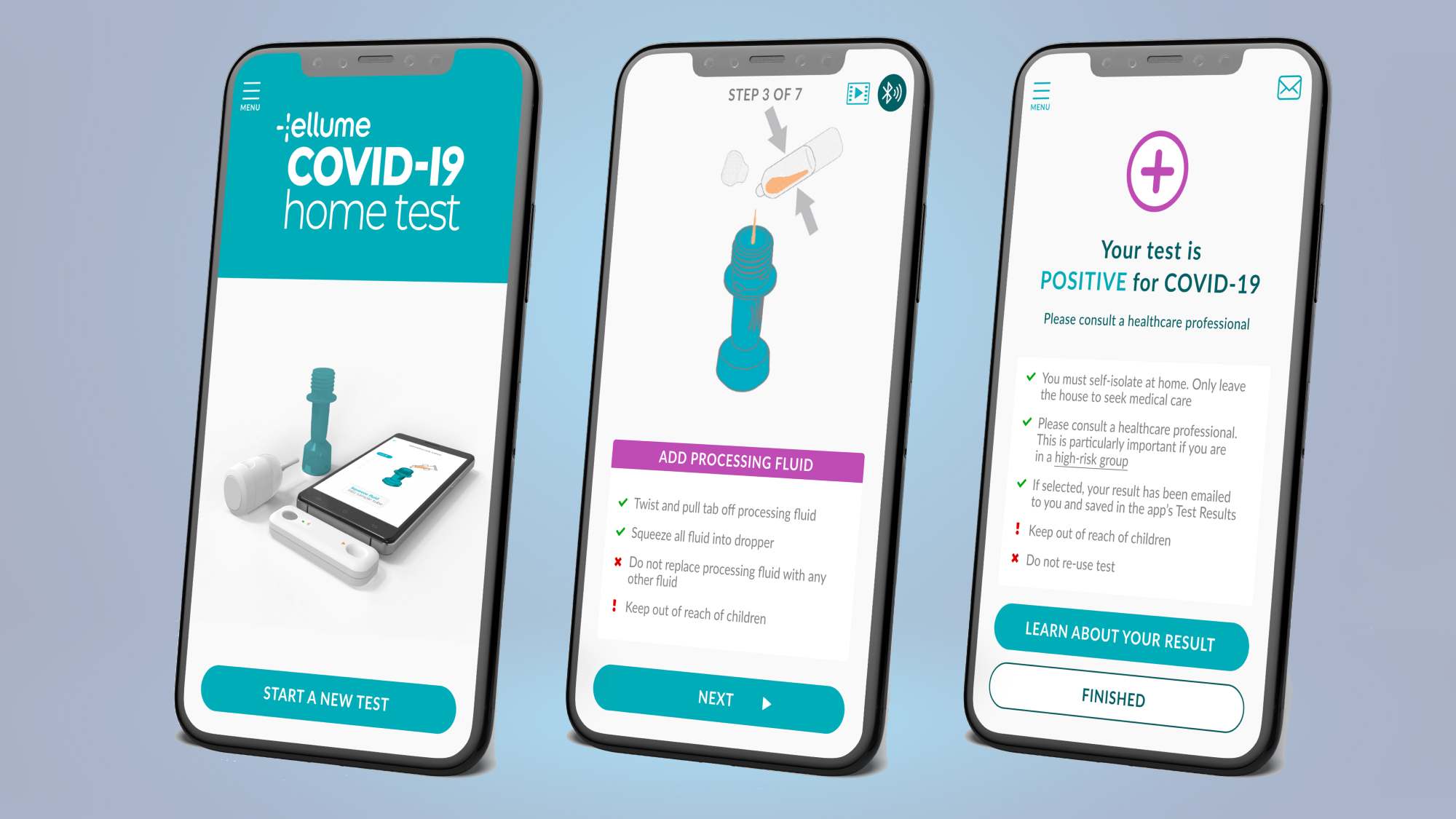
And despite the high 96% accuracy, Ellume still recommends anybody who gets a positive result to consult their doctor.
Where do at-home COVID tests go from here?
The pandemic is certainly not over yet, and Parsons mentioned the coming winter as a time when testing will still be essential.
“America has done so spectacularly well with vaccines and the trajectory is just fantastic and it's wonderful,” he said. “But when the next winter comes there are going to be lots of people who get the usual colds and coughs and flus again. And there is going to be the question of, ‘Is this COVID?’”
As he pointed out, many people still haven’t been vaccinated and may never choose to be. “There is still going to be ongoing transmission of COVID in the community,” Parsons said. “And there are still quite a lot of people that want to use our test as a means of proving they don't have COVID for whatever reason. Catching airplanes overseas, or going to see family members or so on and so forth.”
I myself used several of the samples I received to test myself after traveling. That seems to be an ideal scenario for home tests. In fact, Delta recently partnered with Ellume to provide kits for international travelers.
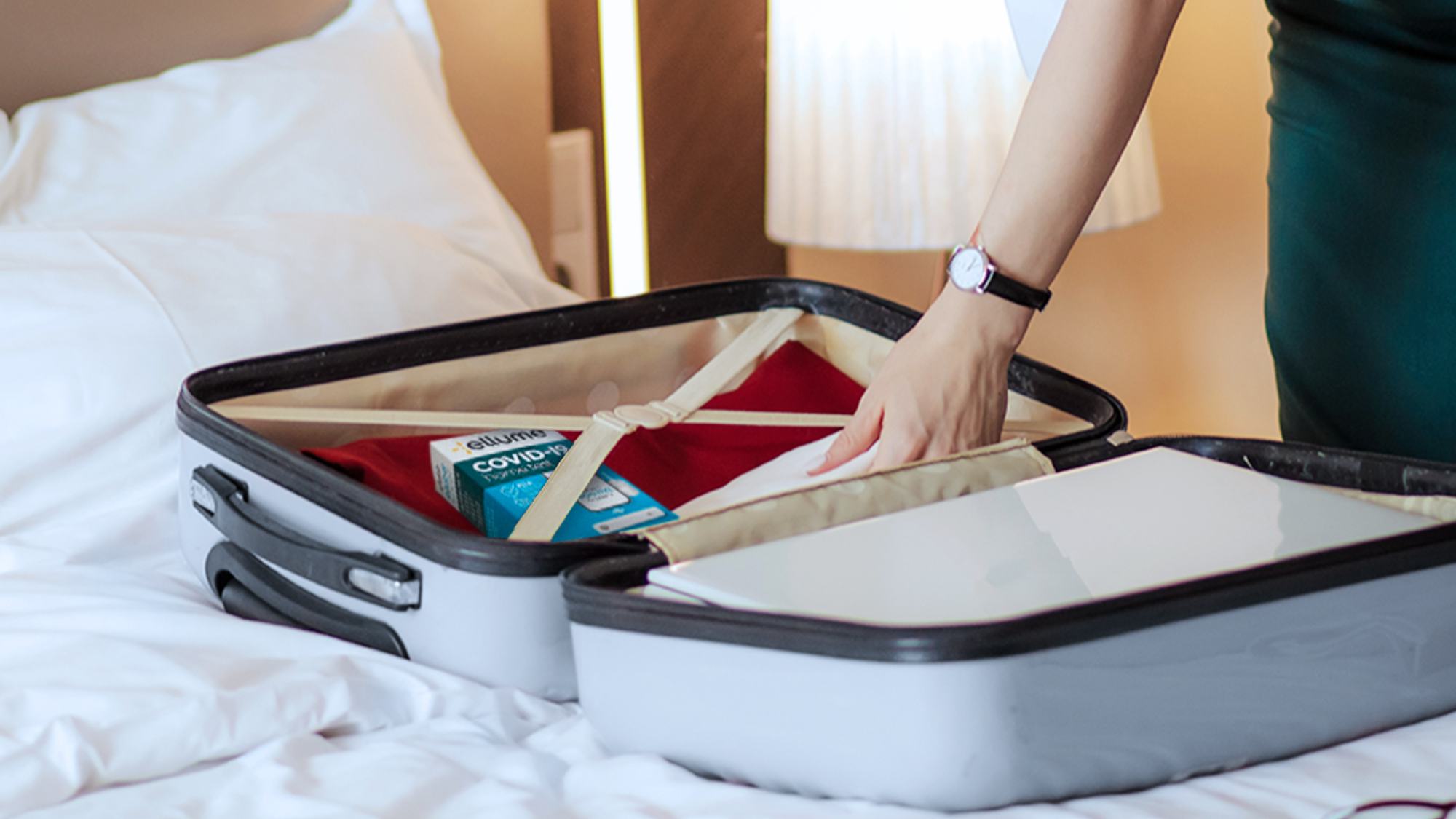
The tech developed for the home COVID test will have uses for other diagnostics. Ellume is working on a home flu test, with a strep test to follow.
And then, after that, the possibilities are manifold. “We think that the integration of technology and biology is really a big part of the future,” Parsons said. “The future of healthcare is moving these tools into the hands of consumers.”

Kelly is the managing editor of streaming for Tom’s Guide, so basically, she watches TV for a living. Previously, she was a freelance entertainment writer for Yahoo, Vulture, TV Guide and other outlets. When she’s not watching TV and movies for work, she’s watching them for fun, seeing live music, writing songs, knitting and gardening.
